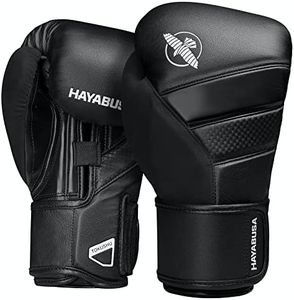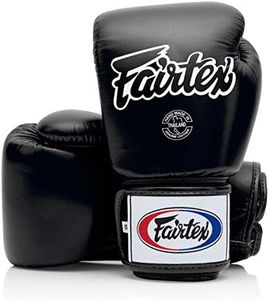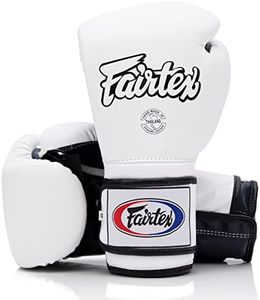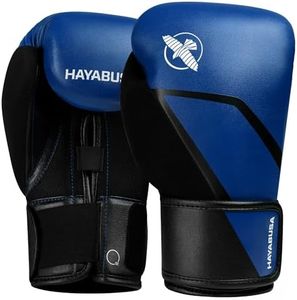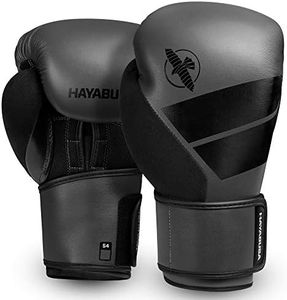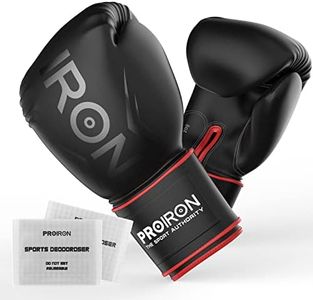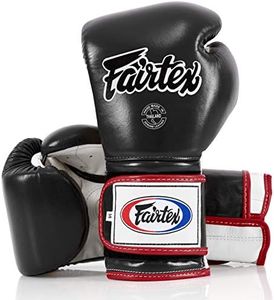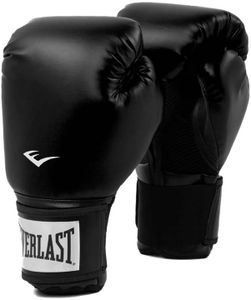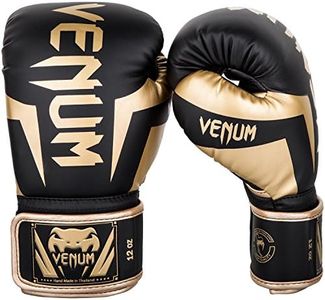We Use CookiesWe use cookies to enhance the security, performance,
functionality and for analytical and promotional activities. By continuing to browse this site you
are agreeing to our privacy policy
10 Best Boxing Gloves
From leading brands and best sellers available on the web.Buying Guide for the Best Boxing Gloves
Choosing the right boxing gloves is important for your safety, comfort, and performance whether you’re a beginner or a seasoned fighter. With a variety of options available, it can be overwhelming to pick the best pair for your needs. By understanding the key features and specifications, you can confidently find gloves that match your training style and goals.Weight (ounces)The weight of boxing gloves, measured in ounces (oz), determines how much padding is inside the glove. Heavier gloves (14-18oz) offer more protection and are commonly used for sparring or fitness training, as they absorb impact better, reducing the risk of injury to you and your partner. Lighter gloves (8-12oz) are typically used for bag work or competition because they’re less bulky and allow faster hand movement. To pick the right weight, consider your purpose: for sparring or general training, go heavier; for speed focus or competition, lighter gloves may be more suitable.
Glove TypeBoxing gloves are generally categorized as training gloves, bag gloves, sparring gloves, and competition gloves. Training gloves are the all-rounders, suitable for most activities. Bag gloves are made specifically for hitting pads or bags, often with less padding but more wrist support. Sparring gloves are heavier with extra padding to protect both you and your partner. Competition gloves are usually lighter and tightly regulated in terms of design and weight. Decide on the glove type by reflecting on your main activities—training, sparring, bag work, or competition.
Closure SystemThe closure system refers to how the glove stays on your hand, with the most common options being Velcro and lace-up. Velcro gloves are easy to put on and take off, ideal for training or solo workouts. Lace-up gloves provide a tighter fit and better wrist support but require help from someone else to tie them properly, making them common in competitions or professional settings. If you train alone or value convenience, Velcro is usually best. If you seek maximum wrist support and fit, especially for sparring or fighting, you might prefer lace-up gloves.
MaterialBoxing gloves are made from either synthetic materials (like PU or PVC) or genuine leather. Leather gloves are generally more durable, comfortable, and mold better to your hand with use, but they cost more and may require more care. Synthetic gloves are often less expensive and can be suitable for beginners or casual fitness training. They may not last as long under heavy use. If you train regularly or want long-lasting gloves, leather might be worth considering. For light use or if you’re just starting out, synthetic materials are often sufficient.
Fit and PaddingFit and padding refer to how well the glove conforms to your hand and the amount/distribution of protective foam inside. A snug fit ensures the glove won’t slip or irritate your skin and gives you better control during training or matches. Padding protects your knuckles and wrists from impact—some gloves have more distributed padding while others focus it over the knuckles. If you have sensitive hands or are injury-prone, choose gloves with extra padding. Always try on gloves, if possible, to check for comfort and support.
Wrist SupportWrist support is essential in preventing injuries. Gloves with strong wrist straps or longer cuffs provide added stability, especially during powerful punches. This is particularly important if you train heavily or have a history of wrist issues. If you prioritize support, look for gloves with reinforced straps or stiffer wrist designs.
VentilationVentilation refers to features like mesh panels or moisture-wicking linings that help keep your hands cool and dry during workouts. Good ventilation means less sweat, reduced odor, and lower chances of skin irritation. If you train often or for long periods, or if you live in a warm climate, prioritizing gloves with good ventilation can make your sessions much more comfortable.
